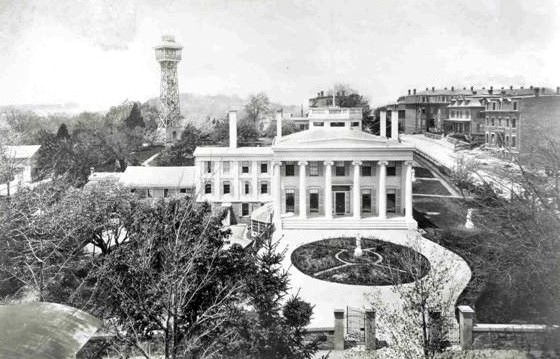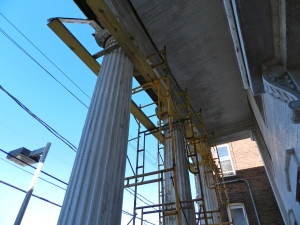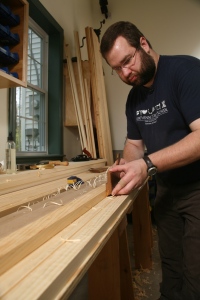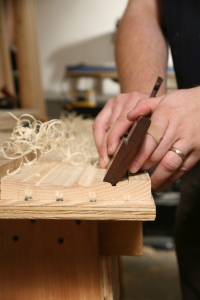19 Jul Reproducing Historic Moldings for the Alvah Kittredge House Using Traditional Tools
Our guest blogger this week is restoration carpenter, Bill Rainford. Bill is an esteemed alumnus of the North Bennet Street School’s Preservation Carpentry Program, and the owner of Rainford Restorations. Recently he wrote an article for FineHomebuilding about his experience reproducing moldings from the Alvah Kittredge House in Roxbury and shares some of that experience with us. Enjoy!
The Alvah Kittredge House in Roxbury Massachusetts is a great example of high style Greek Revival architecture in Boston and a tangible link to the city and the nation’s early history.
The Greek Revival Style was most popular in the United States during the second quarter of the 19th century. (Approximately 1820-1850) During this time period the population and economy was also growing by leaps and bounds. The United States was still a young nation and many folks wanted to show off their new found affluence. During this period of great optimism there was a strong belief in the American Democracy and many associated the ideals of the new nation with those of early Greek Democracy. Around this time, access to Greece and the designs of antiquity were also coming into the mainstream as influential citizens like Thomas Jefferson read books like ‘The Antiquities of Athens‘, Benjamin Latrobe and others built out Hellenistic monuments and public buildings in Washington D.C. and other large east coast cities, and builder’s guides like Asher Benjamin’s ‘The Practical House Carpenter’ proliferated the tool chests of local joiners and carpenters. Given this atmosphere many folks wanted to have their own building look like a Greek temple. For most of the ‘middling’ Americans, especially those in more rural and western locales the scale and details would be simplified down to keeping classical proportions and greatly simplifying details to meet their budgets — pilasters instead of columns, simplified moldings or even flat boards attempting to echo the pediment and other design elements of a Greek temple.
 |
| The original crisp detail of this hand run molding is obscured by the many layers of paint over the generations. (Photo courtesy of the Taunton Press) |
If you’d like to learn more about how to make traditional moldings, please check out the related article ‘Master Carpenter Series:Traditional Molding’ I wrote for FineHomebuilding which can be found here (There is also a related video series which you can find on www.finehomebuilding.com/extrasfor the Sept 2013 issue)
-Bill Rainford
Preservation Carpenter, Joiner, and Instructor
http://rainfordrestorations.wordpress.com









